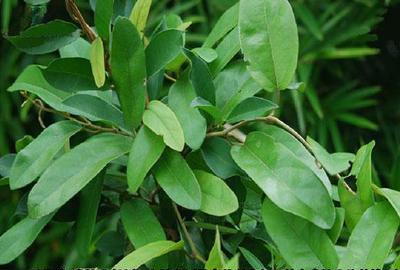- Joint pain and edema, with
Astragalus
propinquus- Huang qi.
[4]
- Wind Dampness induced joint, shoulder, and back pain, with
Clematis
chinensis- Wei ling xian.
[4]
- Pain in the extermities due to Damp Heat, with
Coix
lachryma- Yi yi ren.
[4]
-Edema, feeling of heaviness througout the body, breathing difficulty or wheezing,
with
Cinnamomum cassia- Gui zhi.
[4] [1] A Complete English Dictionary of Medicinal
Terms in Chinese Acupuncture and Herbalism 1981- Henry Lu Chinese Foundations
of Natural Health- The Academy of Oriental Heritage, Vancouver, Canada.
[2]
monographs.iarc.fr
[3] This notice was issued by China’s State Food and Drug Administration
(SFDA) on September 30, 2004.
[4] Chinese Herbal Medicine Materia Medica- Dan Bensky and Andrew Gamble- Eastland
Press 1986 Seattle Washington ISBN 0-939616-15-7
Images
1.
xywos.com
2.
kew.org
Aristolochic acid, aristolactam, magnoflorine, allantoin.[4]
References
[1] Chinese Herbal Medicine Materia Medica- Dan Bensky and Andrew Gamble- Eastland
Press 1986 Seattle Washington ISBN 0-939616-15-7
Aristolochia species containing Aristochic acid
Aristolochia fangchi root- Guang fang ji
Aristolochia manshuriensis stem- Guan mu tong
Aristolochia contorta fruit- Ma dou ling
Aristolochia debilis fruit- Ma dou ling
Aristolochia contorta herb- Tian xian teng
Aristolochia debilis herb- Tian xian teng
Aristolochia debilis root Qing mu xiang
Fang ji can describe any of the following herbs- so it is best
to specify which type.
Aristolochia fangchi- Guang fang ji- Root- Contains aristolochic acid
Stephania tetrandra- Han fang ji Root- Safe
Cocculus trilobus- Mu fang ji Root- Safe
Cocculus orbiculatus- Mu fang ji Root- Safe.[2]
 Aristolochia
fangchi. 广
防 己
Guǎng fáng jǐ Family:
Aristolochiaceae
Aristolochia
fangchi. 广
防 己
Guǎng fáng jǐ Family:
Aristolochiaceae
